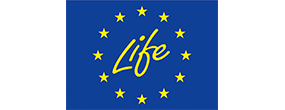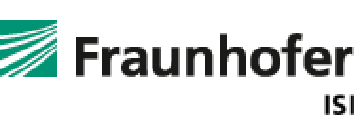Overview
Germany's total final energy consumption of 2022 (195 Mtoe) was slightly below its 2000 level (207 Mtoe, -12 Mtoe, i.e. -6%). In 2022, the largest consuming sector is residential, representing 30.8% of total final energy consumption. The share of residential has slightly decreased from 32.5% in 2000 to 30.8% in 2022, while industry increased its share from 23.9% to 26.5%. The share of transport in total consumption decreased slightly from 28.8% to 27.5% (see Figure 1).
Figure 1: Final energy consumption by sector (with climatic corrections)
Source: ODYSSEEEnergy efficiency for final consumers, as measured by the so-called technical ODEX, has improved (in average) by around 1.3% per year since 2000. Larger gains have been registered for households (1.9%/year), against 1%/year for transport and 1.8%/year for the services sector. A lower annual rate of improvements has been achieved in the industry sector (0.6%/year).
Figure 2: Technical Energy Efficiency Index
Source: ODYSSEEWith the "Federal Climate Change Act" from 2019, Germany introduced legally binding sectoral GHG emission reduction targets for 2030, which were tightened in the first revision in 2021. Since the last revision in July 2024, target compliance is no longer linked to ex-post sectoral statistical emission data, but to overall projected data. In order to achieve the tightened reduction targets, a new Climate Action Programme was adopted by the Federal Government on October 4, 2023. It includes further energy efficiency and climate policy measures. Among those are a new Energy Efficiency Act, which entered into force in November 2023 and serves to implement the 2023 recast of the EU Energy Efficiency Directive. The programme also includes some revisions of legislation on the energy supply side (for coal and wind energy), new regulations for heating of buildings, as well as several new or enhanced funding programs supporting energy efficiency and decarbonization in buildings, industry and transport.
Table 1: Sample of cross-cutting measures
| Measures | NECP measures | Description | Expected savings, impact evaluation | More information available |
|---|---|---|---|---|
| Fuel Emissions Trading Act (Brennstoffemissions-handelsgesetz - BEHG) | Yes | The Fuel Emissions Trading Act established an emissions trading system in Germany for the sectors buildings and transport, starting from 2019. | 145 PJ (total annual savings in 2030) | Link |
| Energy Efficiency Act (EnEffG) | Yes | The new Energy Efficiency Act, which entered into force in November 2023, creates for the first time a cross-sectoral framework for enhanced energy efficiency in Germany. The new legislation establishes efficiency targets for Germany for primary and end user energy consumption for 2030, 2040, and 2045. The targets for 2030 are consistent with those set out for Germany in the revised EU Energy Efficiency Directive (EED). Targets have also been established for 2040 and 2045 to ensure planning and investment security at an early stage; these targets will be reviewed in 2027 and adjusted if necessary. Companies whose annual energy consumption exceeds 15 gigawatt hours will also be required to implement energy or environmental management systems and to document their energy efficiency measures in detailed plans and publish them. Energy efficiency standards will also be introduced for new data centres, which will be obliged to utilise waste heat and to make economical use of cooling system power. Efficiency requirements are also being introduced for existing data centres. | Link | |
| Climate Action Programme 2023 | No | The Climate Action Programme 2023 is the overall plan for energy and climate policies of the current Federal Government. It lists the most important measures in the areas of transport, energy, buildings, industry and agriculture. It thus should make a significant contribution to achieving the climate protection targets as set in the Federal Climate Change Act. Many of the measures in the current program are currently being implemented or have already been implemented, such as the new version of the Building Energy Act (GEG), the Germany Ticket for public transport (Deutschlandticket), the CO2-dependent truck toll, accelerated procedures and areas for the expansion of renewable energies or subsidies for energy-efficient construction and renovation. | Link |
Buildings
As shown in Figure 3 the household energy consumption per m² for space heating has decreased by 32% since 2000, from 16.5 koe/m² to 11.2 koe/m² in 2022. The consumption per dwelling for water heating, for appliances and for cooking stayed relatively constant during the last years and decreased only slightly compared to 2000 (see Figure 4).
Figure 3: Energy consumption of household space heating per m2 (with climatic corrections)
Source: ODYSSEE; ambient heat included.Figure 4: Energy consumption per dwelling by end-use (except space heating)
Source: ODYSSEEFigure 5 shows a decomposition of the change in energy consumption. It shows that the total final energy consumption of households decreased by around 7.5 Mtoe between 2000 and 2022. Two main factors contributed to an increase in energy consumption – more dwellings (7.5 Mtoe) and lifestyle/comfort (9.7 Mtoe, due to larger homes and more appliances per dwelling). On the opposite, energy savings decreased the consumption by around 26.4 Mtoe, while other effects had only a small decreasing impact of 2.4 Mtoe. Climate effects also had a small decreasing impact of 0.7 Mtoe.
Figure 5: Main drivers of the energy consumption variation in households
Source: ODYSSEE; ambient heat included.Figure 6 shows the development of the specific energy consumption in households for both electricity and total final consumption. Both the electricity consumption per square meter and the total consumption have been steadily increasing until 2006 but dropped significantly since then (-45 % for the total final consumption, -34 % for electricity).
Figure 6: Energy and electricity consumption per employee in services (with climatic corrections)
Source: ODYSSEETo achieve the target of a virtually climate-neutral building stock in Germany by 2050, a set of measures was either newly established or comprehensively revised in the last years. The main building regulation in Germany is the “Building Energy Act (GEG)”, which came into force in November 2020. The GEG regulates the energy requirements for new and existing buildings and for the use of renewable energies in buildings. The GEG has been amended twice since then. From 1 January 2023, especially the standards for new buildings were tightened. From 1 January 2024, the switch to at least 65% renewable energies has been mandatory when installing new heating systems. The requirement to use at least 65% renewable energies is also linked to the existence of municipal heat planning in accordance with the new Heat Planning Act. In parallel, the funding conditions for energy efficiency and renewable energies in buildings were improved and combined in a "Federal funding program for efficient buildings (BEG)" since 2020. From 2024, the revised BEG supports the replacement of old, fossil-fuel heating systems with heating systems based on renewable energies with an investment cost subsidy of up to 70 percent and also includes specific conditions for low-income households.
Table 2: Sample of policies and measures implemented in the building sector
| Measures | NECP measures | Description | Expected savings, impact evaluation | More information available |
|---|---|---|---|---|
| Tax incentives for energy efficient building refurbishment (Steuerliche Förderung der energetischen Gebäudesanierung) | Yes | The subsidy takes the form of a deduction from the tax liability via a period of three years. The tax incentive is limited to individual measures in owner-occupied apartments and residential buildings. | 52.4 PJ (total annual savings in 2030) | Link |
| Building Energy Act (GEG) | Yes | Since November 1, 2020, the Building Energy Act (GEG) has replaced the Energy Saving Act (EnEG) with the Energy Saving Ordinance (EnEV) and the Renewable Energies Heat Act (EEWärmeG). Amended versions came into force on January 1, 2023 and January 1, 2024. A further amendment to the GEG has been in force since January 1, 2024 (hereinafter: GEG 2024). The changes are primarily aimed at only installing new heating systems that generate at least 65% of the heat provided using renewable energies. | 4,100 kt CO2 (total annual savings in 2030) | Link |
| Heat Planning Act (Wärmeplanungsgesetz) | Yes | The Heat Planning Act forms the basis for comprehensive municipal heat planning. It defines uniform nationwide standards and specifications for the proportion of heat from renewable energies and unavoidable waste heat as well as the expansion of district heating. The Heat Planning Act came into force on January 1, 2024. | Link | |
| Federal subsidy for efficient buildings (Bundesförderung für effiziente Gebäude (BEG) | Yes | With the BEG, the existing funding programs for the building sector will be grouped in a single, comprehensive, modernized and optimized funding offer. The BEG offers funding for e.g. the implementation of new heating systems and the optimization of existing ones, measures on the building envelope and the use of optimized systems engineering. The BEG was first implemented on January 1st 2021. A new subsidy guideline came into effect January 1st 2024 and ends December 31st 2030. The revised BEG supports the replacement of old, fossil-fuel heating systems with heating systems based on renewable energies with an investment cost subsidy of up to 70 percent and also includes specific conditions for low-income households. | 14,600 kt CO2 (total annual savings in 2030) | Link |
Transport
Final energy consumption in transport is dominated by cars covering 65% of total consumption in 2022. Compared to 2000, the share of road freight increased from 25.5% to 28.8%, while rail transport dropped from 3.6% to 2.4% and domestic air from 1.7% to 0.7%. In the same period the share of busses and water stayed almost constant.
Figure 7: Transport energy consumption by mode
Source: ODYSSEECars represented 84% of passenger traffic measured in passenger kilometers in 2022, followed by rail with 11.4% and only 4.7% for bus. The share of cars slightly increased in comparison to 2000 (+0.1% points), while the share of rail increased by 2.3 % points and bus traffic dropped by 2.3% points.
Figure 8: Modal split of inland passenger traffic
Source: ODYSSEERoad freight transport represents 73.3% of total freight traffic in 2022, 5.2% points more than in 2000. The share of rail transport in freight increased by 2.2% points, while the share of water traffic decreased by 7.4% points to 6.8% of total freight transport activity (see Figure 9).
Figure 9: Modal split of inland freight traffic
Source: ODYSSEEFigure 10 shows the different factors influencing the change in final energy consumption of transport. Germany's total final energy consumption for transport decreased by about 5.8 Mtoe in the period from 2000 to 2022. The increasing traffic of passengers and freight contributed to increase the consumption by 4.5 Mtoe (activity). This trend was counterbalanced by energy savings (11.2 Mtoe). Modal shift had a slightly increasing effect of 0.6 Mtoe, while other effects resulted in an increase of about 0.2 Mtoe.
Figure 10: Main drivers of the energy consumption variation in transport
Source: ODYSSEEThe Climate Action Programme 2023 includes a couple of measures addressing different fields of action in the transport sector: (1) improvement of the rail network and strengthening of urban and regional transport (among those a flat price ticket valid all over Germany, the so-called "Deutschlandticket") (2) further improvements in public transport (3) Increased use of the potential of synthetic fuels (4) Drive change for trucks and heavy commercial vehicles (5) Acceleration of climate neutrality for passenger cars (6) Increased digitalisation of local traffic systems. From 2016 to 2023, a subsidy programme for the promotion of electric mobility was in place, the so-called "Umweltbonus".
Table 3: Sample of policies and measures implemented in the transport sector
| Measures | NECP measures | Description | Expected savings, impact evaluation | More information available |
|---|---|---|---|---|
| Levy on air traffic (Luftverkehrsabgabe) | No | This measure aims at decreasing the share of air travel passengers through an increase of the air traffic levy. It is the counterpart measure to the decrease of value added tax on long-distance railway tickets, which aims at increasing the share of railway passengers. | 67.40 PJ / 270 ktCO2 (total annual savings in 2030) | Link |
| Germany-Ticket for local public transport (Deutschlandticket) | Yes | 550 ktCO2 (total annual savings in 2030) | Link | |
| Electric vehicle purchase subsidy (Umweltbonus) | Yes | The programme provided rebates on purchase of battery electric vehicles (BEVs) and plug-in hybrid vehicles (PHEV) sold in Germany between 2016-2023. | 2,910 ktCO2 (total gross annual savings in 2023, starting in 2016) | Link |
Industry
The total consumption of the industry sector increased from 49.5 Mtoe in 2000 to 51.8 Mtoe in 2022 (+4.7%). Consumption of chemical industry increased by 20 % in this time period, while the energy consumption of the steel producing sector decreased by 17%. Non-ferrous metals' energy consumption decreased by 19%.
Figure 11: Final energy consumption of industry by branch
Source: ODYSSEEWhile the specific consumption of steel is higher in 2022 compared to 2000, the specific consumption for paper and cement production are lower. In the meantime, some (strong) fluctuations e.g. due to capacity effects during low utilization of production capacities (especially in an economic crisis such for cement in 2006) can be observed.
Figure 12: Unit consumption of energy‐intensive products (toe/t)
Source: ODYSSEEFigure 13 shows the factors influencing the changes in final energy consumption of the industrial sector. The increase of its energy consumption by about 2.4 Mtoe between 2000 and 2022 was mainly driven by change in industrial activity (7.2 Mtoe) and other effects (6.7 Mtoe). This effect was counterbalanced by energy savings (-7.1 Mtoe) and structural changes towards less intensive branches, which increased their contribution in industrial value added (-4.5 Mtoe).
Figure 13: Main drivers of the energy consumption variation in industry
Source: ODYSSEEThe main funding program for energy efficiency in industry is the "Federal Funding for Energy and Resource Efficiency in Companies", starting in 2019. In 2020, the continuation of the Energy Efficiency Networks Initiative and its further development to Efficiency and Climate Networks was agreed between the Federal Government and Industry Associations. The decarbonisation of energy-intensive industries is funded by a subsidy programme, which was re-structured in 2024 and complemented by the introduction of Carbon Contracts for Difference.
Table 4: Sample of policies and measures implemented in the industry sector
| Measures | NECP measures | Description | Expected savings, impact evaluation | More information available |
|---|---|---|---|---|
| Federal support for energy and resource efficiency in the economy (Bundesförderung für Energie- und Ressourceneffizienz in der Wirtschaft (EEW)) | Yes | 105.40 PJ (total annual savings in 2030) | Link | |
| Peak balancing under the Energy Tax Act (EnergieStG) and the Electricity Tax Act (StromStG) (Spitzenausgleich im Rahmen des Energiesteuergesetzes (EnergieStG) und des Stromsteuergesetzes (StromStG)) | Yes | Peak balancing under the Energy Tax Act (EnergieStG) and the Electricity Tax Act (StromStG): Under the so-called peak balancing tax, relief is provided for companies of the manufacturing industry. | 41.01 PJ (annual savings in 2030) | Link |
| Energy Efficiency and Climate Protection Networks Initiative (Initiative Energieeffizienz- und Klimaschutz-Netzwerke) | Yes | 30.9 PJ (total annual savings in 2030) | Link |





